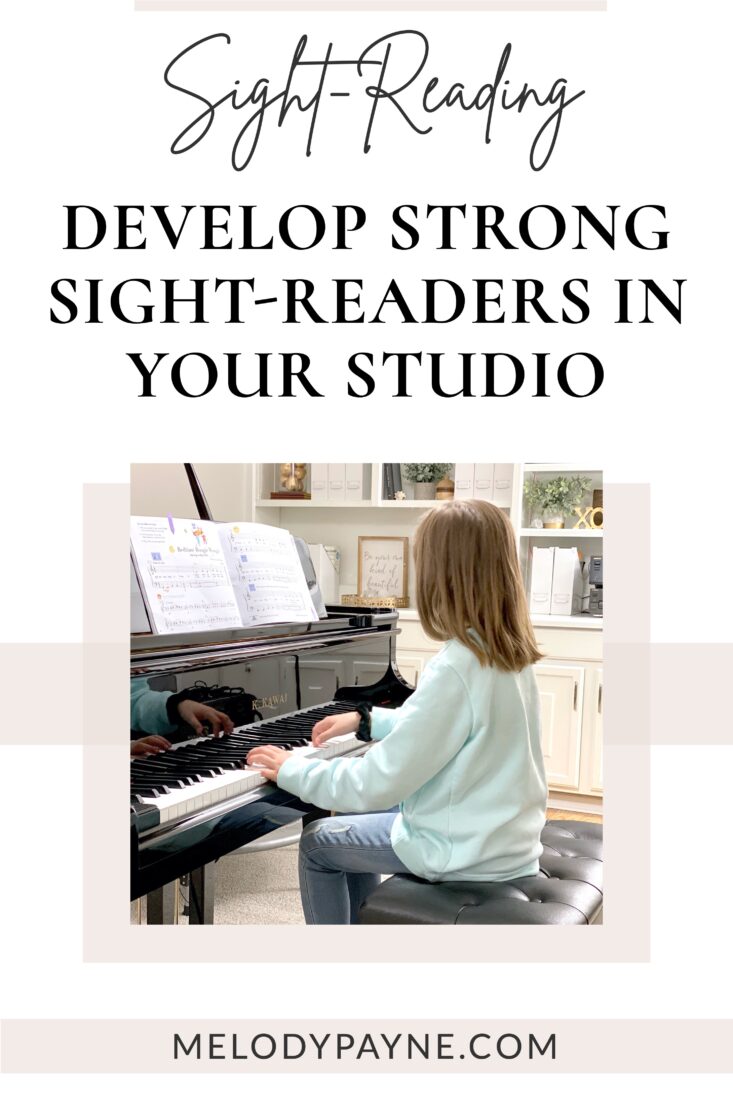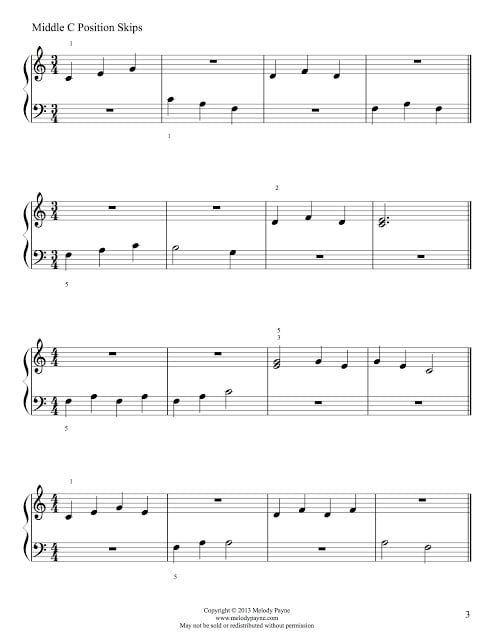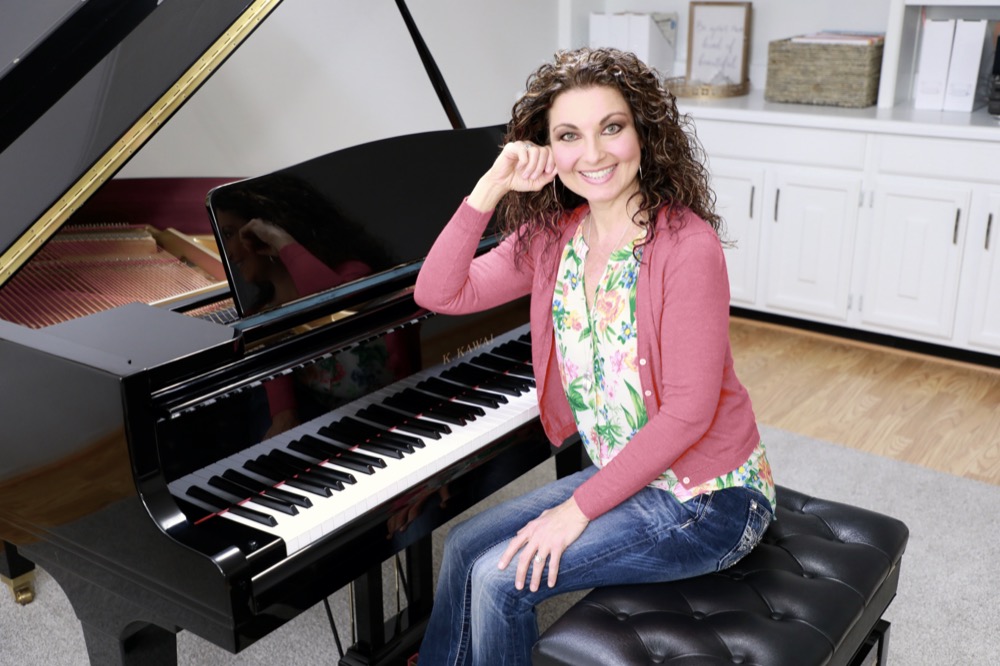Develop Strong Sight-Readers with “The Great Sight-Reading Challenge”
This post may contain affiliate links. If you purchase something through an affiliate link, I will receive a small commission at no cost to you. For more information, read the disclosure statement here.

I created “The Great Sight-Reading Challenge” to give all of my students some sight-reading motivation and to challenge them to sight-read three pieces or sight-reading flash cards/exercises each day at the piano.
Sight-reading is an incredibly valuable skill for musicians. While some students naturally gravitate towards exploring new music and sight-reading fearlessly, others are more hesitant to begin developing this important skill.
One of my initial goals for this challenge was to give my students a reason to play the piano, at least for a few minutes each day, during a 3-week break from lessons.
This break occurred between summer and fall sessions, and I had two goals I wanted them to accomplish during the break: I didn’t want them to forget most of what they had learned during the summer, and I wanted them to strengthen their reading skills so they would be more motivated to learn new music once the fall session began.
Keep reading to see how we did this fabulous challenge, and what kinds of results we saw at the end!
Objectives for The Great Sight-Reading Challenge
- To encourage my students to become better sight-readers
- To challenge my students to practice their sight-reading skills
- To help students move past their fears of sight-reading
- To develop students who are curious and excited about playing new music
- To give my students a fun and easy assignment during semester breaks & holidays
- To have my students sight-read 75 items throughout 25 days of practice (brief version)
- To have my students sight-read 300 items throughout 100 days of practice (longer version)
Ages
- Any age!
Levels
- Beginners through advanced students will benefit from this challenge
Materials
- The Great Sight-Reading Challenge score sheets (click the button below)
- Colored pencils, crayons, markers, or stickers
- Lots of appropriately-leveled sight-reading materials from pre-staff through advanced
You may also find My 3 Favorite Piano Sight-Reading Resources To Use In Piano Lessons helpful.
Instructions
- Print out The Great Sight-Reading Challenge score sheets (click the button above)
- Have students sight-read 3 pieces/selections/items each day for at least 5 days per week.
- For each day that they complete their sight-reading assignment (or for each day they complete the number of sight-reading examples you assign), they should color one star on the sheet or place a sticker on the star.
- Have your students sight-read 3 selections during their lessons this week to get a head start on the challenge and to fill in one star!
Preparation for The Great Sight-Reading Challenge
Along the way, I had to create from scratch tons of sight-reading materials for the beginning students who were learning to read music off and on the staff by using several of the most prominent and wonderful piano series that are widely available.
This means that if the student was learning Landmark Notes, for example, I created a set of sight-reading sheets (four pages, each with four examples) specifically for that student, specifically for that week. Likewise, if the student learned a new note the next week, I created a specific set of sight-reading materials for that week as well.
This would continue for several weeks until the student could read enough notes that I could then have him or her use some early elementary collections as well as the Bastien Sight-Reading series books 1 and 2, which contained many four-measure examples gradually increasing in level of difficulty.
Students who were not yet reading music on the staff used these pre-staff and finger number piano solos as well as these pre-reading sight-reading resources that I created especially so they could participate too.
I printed all of my sight-reading sets as I created them, and placed them in plastic sheet protectors. I made a master binder of all the printed materials, then I used that binder as a partial sight-reading library for my students.
Rules for The Great Sight-Reading Challenge
All of my students were required to participate in The Great Sight-Reading Challenge. Each week I prepared and gathered enough sight-reading sheets for each of my beginning students to borrow, and enough books of appropriately-leveled literature collections for each of my late elementary through advanced students to borrow.
Students’ sight-reading assignments always consisted of music that was below their current level of study.
Early elementary students were required to follow a specific sight-reading protocol with each example, every week.
While following the protocol, early elementary students sight-read three 4-measure examples three times each to earn one star on their charts (see the example page from Middle C Position Skips below).
On their weekly assignment sheet I typed “three examples, three times each, equals one star on your chart”. Their goal was to play each example to the best of their ability the first time, then figure out how to make improvements the second and third times.
I had them play each example three times so they could experience the sight-reading process more fully, and so they could improve their error-detection and problem-solving skills as well as their sight-reading skills.
If you have any early elementary students in your studio, they’ll love sight-reading these early elementary piano solos.

Elementary students were required to sight-read three short pieces from an appropriate collection. Three pieces, three times each, equaled one star on their chart.
Intermediate and advanced students were required to sight-read two or three (or more) pages from a standard literature book, pop book, jazz book, or other collection. Two to three pages, two times each, equaled one star on their chart.
Students earned one star on their sight-reading chart only if they completed their entire sight-reading assignment for that day. I wanted them to spend about 5 minutes each day sight-reading new material, and I wanted them to see for themselves how important the skill of sight-reading is.
Results of The Great Sight-Reading Challenge
Over the course of the school year, my students sight-read a total of 3,661 items! Not all of the student participated in The Great Sight-Reading Challenge for the entire year due to transferring into my studio mid-semester, starting lessons as an absolute beginner, etc.
I kept track of the number of items they sight-read each week by marking their stars on their charts (one star for every day they completed the sight-reading assignment).
Several students earned enough stars to fill one chart, and some students earned enough stars to fill two charts by completing double sight-reading assignments each day!
Numbers
So, what does this all mean?
- 13 eligible students
- They sight-read a total of 3,661 items throughout the year
- They collectively sight-read approximately 81,143 measures of music during 9 months! I am so proud of them for their hard work.
Hannah R. sight-read 648 items, the highest individual total for this year’s sight-reading challenge, which equals approximately 14,362 measures of music this year! When I asked her if she was enjoying sight-reading, her response was:
I’m addicted to it!
Improvements from The Great Sight-Reading Challenge
Did the sight-reading skills of my students skyrocket? Without a doubt! Some of my students improved by at least 2 or 3 levels in their sight-reading this year. The improvements in sight-reading led directly to improvements in efficiency in learning new music, improvements in their internal motivation to be successful learning their new music, and overall improvements in their weekly lessons!
Conclusion
Were any prizes awarded for our sight-reading challenge? No, not this time. (though if you want to include prizes, check out Fun & Affordable Prizes Piano Students Love!)
Did students win anything for their efforts? My students received the best prizes of all: a deeper appreciation and understanding of music, stronger sight-reading skills, better error-detection and self-evaluation skills, and a greater understanding of why sight-reading is so important.
Will I do this again? Absolutely, and I can’t wait!
Are you ready to develop strong sight-readers in your studio? Click the button above to download the free scoring sheets and get the pre-staff sight-reading resources for your studio here.
Happy sight-reading!
More blog posts on teaching piano
Don't miss out!
Follow on Facebook and Instagram, join the best Facebook group for piano teachers, and subscribe to the newsletter to get helpful teaching tips, resources, and tutorials delivered straight to your inbox every week.
Melody Payne
Melody Payne
Welcome!

Hi! I’m Melody Payne, a pianist and piano teacher, educational resource author, a fun-loving wife to the most wonderful and talented hubby I could ask for, and a lifelong learner who loves to share. I want to make your life as a music teacher easier by writing and sharing helpful and relevant music teaching articles, and by creating educational resources with your very own students in mind. If you are a parent who wants to enroll your child in piano lessons, I’d love for us to get started building those skills that can give your child a lifetime of musical enjoyment!


